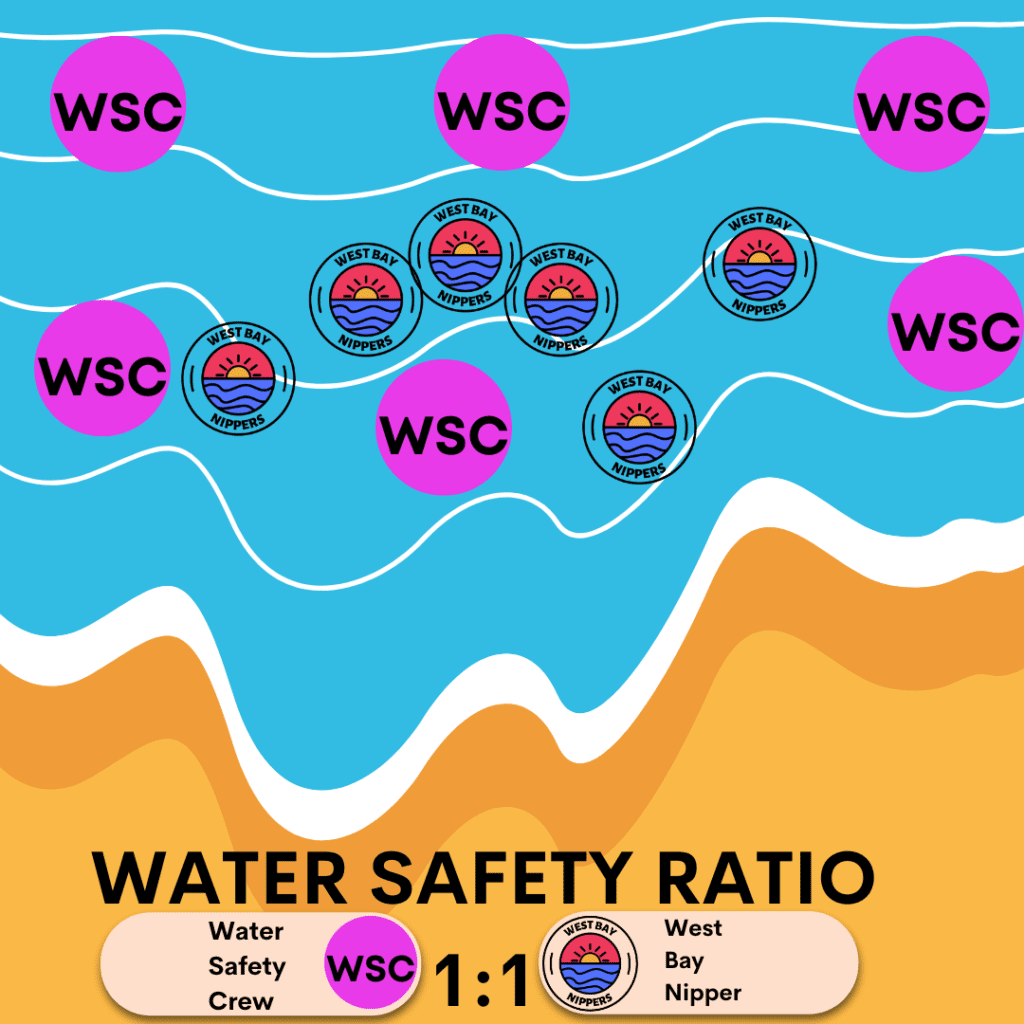SURF SAFETY
Swimming Session: Kaohsiung, Taiwan
Surf Safety Lesson: Safely enter and exit the surf
Identifying potential hazards at the beach
When we go to the beach, we must know potential hazards to stay safe and have fun. Here are some common dangers we should look out for:
- Rip currents are strong currents that can pull you away from the shore. It could be a rip current if you see water that looks darker, choppier, or has debris floating. Remember to swim between the red and yellow flags where lifeguards are watching.
- Big waves: Large waves can be powerful and dangerous, especially if you’re not a strong swimmer. Be careful and stay in the shallow water if the waves are too big for you.
- Sharp objects: Sometimes, there might be broken glass, rocks, or shells on the beach that can hurt your feet. Always wear shoes or sandals when walking on the sand.
- Sunburn: The sun can be very strong at the beach, so remember to apply sunscreen, wear a hat, and stay in the shade when you can.
- Marine animals: Some sea creatures, like jellyfish, sea urchins, or sharks, can be dangerous. If you see any of these animals, keep a safe distance and tell a lifeguard.
- Tides: Be aware of the tides, as they can change the water depth and create strong currents. Ask a lifeguard about the tide times and notice any posted signs.
By watching for these hazards, we can ensure our beach trips are safe and enjoyable!
SURF SKILL DEVELOPMENT:
Beginner-Level Swimming Activities
A parent/guardian must:
Be within the hands reach of your child during the swimming activities and remain in waist-deep water.
The exception will be if your child learns a specialized skill with the coach or water safety crew member. Only adults who feel comfortable in the surf zone may participate as a Water Safety Crew member.
The water safety ratio is 1:1

One Water Safety Crew member (adult) for each West Bay Nipper
Swimming Activities:
Safely entering and exiting the water
Standing and navigating through whitewater waves
Diving over or under whitewater waves
Bodysurfing waist-deep waves
Fall flat (like a starfish) on the surface of the water and try to avoid touching the sand
Put both your arms and hands out in front of you when falling forward
Cover your head with your arms
Treading water and floating
Rip Current Survival Plan
Surf Swim
FAQ
Does that mean I need another guardian/adult for my other child? It is usually myself and two kids.
Great question. No, you don’t need another guardian/adult for your other child.
Example:
Four children may enter the water for the swimming skill if we have four water safety crew members (adults). The other children will wait for their turn on the beach. Every participant will have an equal opportunity to participate in the lessons.
